Ground Cover¶
The Ground Cover system allows you to spread many objects throughout your entire level. This object makes use of the Terrain Material system, applying textures or 3D objects on a per-layer basis. The most practical uses of Ground Cover include:
- Creating large fields of foliage (grass, wheat, etc.)
- Automatic placement of shapes and environmental textures on specific terrain types.
- Providing another layer of environmental realism when combined with Forest Editor and Replicators.
Adding Ground Cover¶
To add a ground Cover object to a level, select the Library tab in the Scene Tree panel. Click on the Level tab and double-click the Environment folder. Locate the Ground Cover entry.
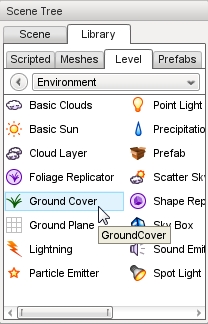
Double-click the Ground Cover entry. The Create Object dialog will appear.
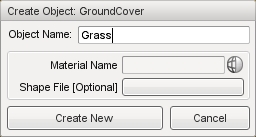
If you already have a material or shape you want to use, you can set them here. Materials are used to paint the ground with textures which can contain transparency so that the underlying ground shows through. A Shape File is used to replicate 3D objects on the ground. Enter a name for you Ground Cover object then click the Create New button. A new Ground Cover object will be added to your level. Without a material, the system will render a pattern on the ground with the default “No Material” texture:
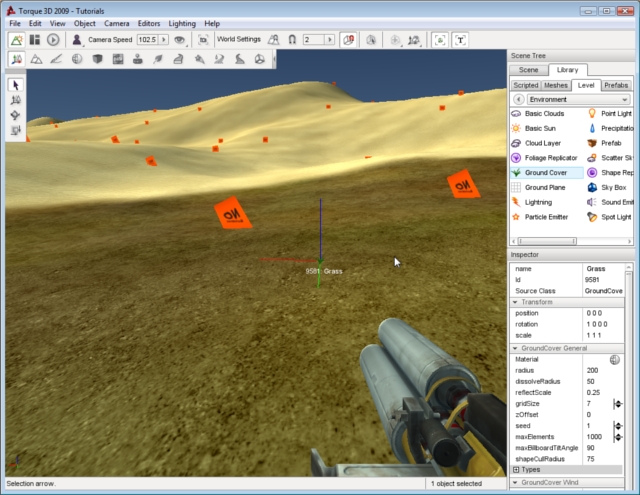
To change the No Material indicators to a real Material scroll through the Ground Cover properties until you get to the Ground Cover General section. In the Material field, click on the globe to open the Material Selector:

Material Field
When the Material Selector appears, you have the option to pick an existing material or create a new one in the Material Editor.
Assigning Terrain Material¶
When you first add a Ground Cover object, it will place the material or shape on the entire terrain. To limit the placement of Ground Cover, you must set the terrain layer. To set the terrain layer with the Ground Cover selected, scroll down to the Ground Cover General set of fields. Find the Types sub-section.
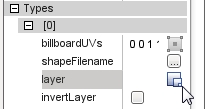
Types is an array with each entry controlling a section of the Ground Cover. If this is confusing, think of it like this as follows. The Ground Cover is a single object that is covering the entire terrain. The object itself is comprised of eight sections, Types[0] through Types[7]. Each section can be told what, where, and how to render a material or shape. You can feasibly have the Ground Cover object rendering simultaneously on eight different terrain layers.
With the above information in mind, you can assign the Ground Cover to terrain materials. Scroll through the properties until you get to Types[0]. Click on the box icon in the layer field. The Material Selector for terrains should appear. Select a material such as the dirt_grass shown here:
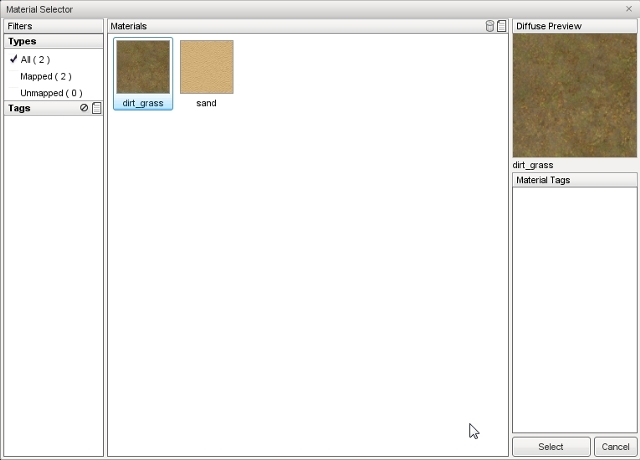
After you click the Select button, the Ground Cover will stop placing billboards on the entire terrain. It should now only be placing the foliage on the specific terrain layer you chose.
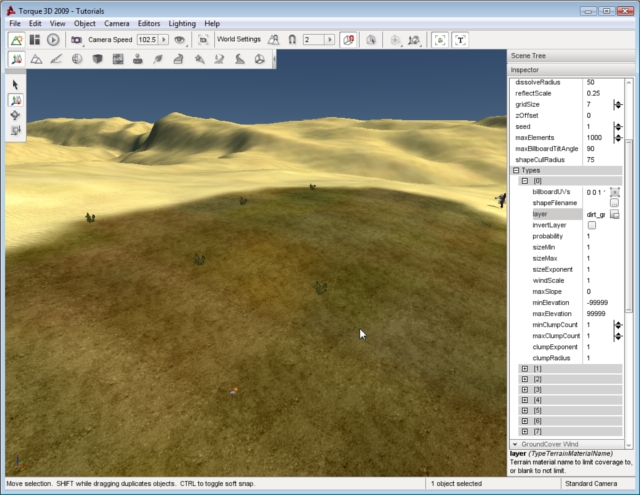
If you are having a difficult seeing this change, locate the maxElements field and increase the value dramatically:
